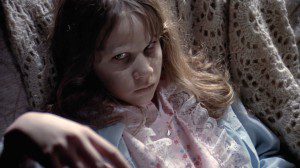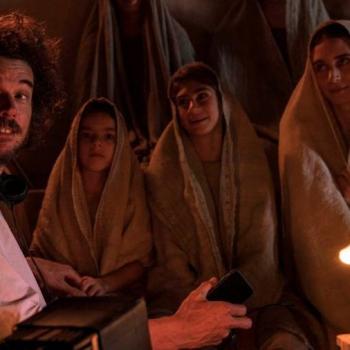 I WAS just getting out of diapers at the time, but the early 1970s were, I am told, a period of intense spiritual sensitivity. Certainly, popular culture bears that out. In 1973, Godspell and Jesus Christ Superstar, two popular musicals based on the life of Jesus, hit the big screen. But the film that caught the country’s attention that year looked not to the Prince of Peace, but to the Prince of Darkness, for its inspiration.
I WAS just getting out of diapers at the time, but the early 1970s were, I am told, a period of intense spiritual sensitivity. Certainly, popular culture bears that out. In 1973, Godspell and Jesus Christ Superstar, two popular musicals based on the life of Jesus, hit the big screen. But the film that caught the country’s attention that year looked not to the Prince of Peace, but to the Prince of Darkness, for its inspiration.
The Exorcist was a huge box-office hit, raking in a then-unheard-of $165 million; once inflation is taken into account, some estimates place it among the 20 most successful films of all time, right up there with old Disney cartoons, Star Wars movies and Gone with the Wind. The film won an Academy Award for its script, which William Peter Blatty adapted from his novel; it was, in turn, inspired by a supposedly true incident.
The film’s effects continue to be felt today. A recent article in Canadian newspapers observed that, of all horror films, The Exorcist has proved nearly impossible to spoof; its vision of evil is just far too potent. And in September, 27 years after its initial release, Warner Brothers brought the film back to theatres, with bonus footage and digitally enhanced sound.
What accounts for the film’s success? Certainly, its shock value must be a part of the explanation. Hollywood abolished its production code just a few years before The Exorcist came out, and filmmakers were pushing every envelope they could find. Turning a 12-year-old girl into a swearing, masturbating, supernatural psychopath was as extreme as anyone could get.
But on a deeper level, the film also tapped into the public’s increasing dissatisfaction with modernity. When Regan (Linda Blair) exhibits the first symptoms of her possession, scientists and psychiatrists poke, prod, and bleed her in a futile quest to diagnose a ‘natural’ cause for her ailment and to find a ‘natural’ cure for her. Only the Catholic church is willing to consider that the real problem may be supernatural in origin.
However, even the church has its doubters. Father Karras (Jason Miller), one of two priests assigned to Regan’s case, is also a modern psychiatrist who wrestles with doubts and guilt. For him, the demon may represent an unusual, and unsettling, opportunity to find the grace to go on believing. For if there is a Devil, then surely there must also be a God.
Some have said the film glorifies evil, but Blatty, in a recent interview with the National Review, firmly denied that, pointing out that the demon loses in the end. To my mind, this is reminiscent of the debate over whether it is possible to make an ‘anti-war’ war movie. Some say it is impossible to stage violent acts for an audience’s consumption, without somehow making them attractive. If The Exorcist glorifies evil, then Saving Private Ryan glorifies warfare — or so goes the argument. More serious, to my mind, is the way in which the demon is defeated.
After his colleague Father Merrin (Max von Sydow) dies of a heart attack, Father Karras demands that the demon possess him for a change. As soon as the demon enters his body, Father Karras runs to a nearby window and jumps to his death, taking the demon with him. (The 1990 sequel The Exorcist III revises the original film’s ending, revealing that Father Karras survived the fall to become a patient in a padded cell.)
Christian novelist Stephen Lawhead commented on this plot twist years ago, in his book on pop culture, Turn Back the Night. Lawhead makes the point that films like The Exorcist perpetuate a worldview which says evil is “powerful,” but good is merely “lucky.” Father Karras wins, but only because he uses what Lawhead calls “a surprise tactic.” If God has anything to do with the demon’s defeat, it’s not obvious within the film.
Reportedly, the two priests do discuss God’s role in in a scene that was cut from the film’s original 1973 version. As of this writing, it is too early to tell whether the newer, longer version will put this scene back in. But in the aforementioned interview, Blatty says the restored footage will give the film a “moral centre” that was missing before.
In addition, he says the film was designed to challenge the “mechanistic clockwork universe” embraced by the 19th and 20th centuries, which denied the existence of spirits and relegated human beings to nothing more than “molecular structures.” In other words, he set out to oppose naturalism, which he deems “the biggest superstition of both those centuries.”
That, at least, is one area where the film and its Christian critics are in full agreement.
— A version of this article was first published in BC Christian News.












